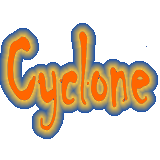02-09-2025, 04:41 AM
Procurement Resource, a premier provider of procurement intelligence and market research solutions, is pleased to release its most recent PET Bottle Production Cost Report. This detailed and insightful report serves as a vital tool for manufacturers, investors, entrepreneurs, and procurement professionals seeking a competitive edge in the polyethylene terephthalate (PET) packaging industry.
The report offers a deep dive into cost structures, production processes, raw material sourcing, market trends, environmental factors, and economic considerations, empowering stakeholders to make informed decisions when setting up or optimizing PET bottle manufacturing operations.
PET Bottles: Ubiquitous and Essential in Modern Packaging
PET (Polyethylene Terephthalate) bottles are among the most widely used packaging materials globally, prized for their strength, transparency, lightweight nature, and recyclability. Commonly used in bottling beverages, edible oils, pharmaceuticals, personal care products, and household chemicals, PET bottles offer an ideal balance of durability and cost-efficiency.
Their popularity is further driven by consumer demand for lightweight, resealable, and shatterproof containers, alongside growing environmental awareness that supports PET’s recyclability. As a result, the PET bottle market continues to expand, particularly in high-growth regions such as Asia-Pacific, Latin America, and Africa.
In-Depth Report for Strategic Decision-Making
The PET Bottle Production Cost Report by Procurement Resource serves as a robust roadmap for industry players planning to establish or expand PET bottle production units. It provides clear and accurate insights into:
Market Analysis: Global Trends and Regional Outlook
The report highlights regional dynamics affecting PET bottle consumption and production, with attention to demand patterns in the food & beverage, personal care, and pharmaceutical sectors.
Raw Material and Pricing Insights
PET bottle production primarily depends on the polymer PET resin, which is derived from purified terephthalic acid (PTA) and monoethylene glycol (MEG) — both petroleum-based products.
The report provides:
Sustainability and Circular Economy Trends
Sustainability is transforming PET bottle manufacturing, with growing interest in:
Technical and Operational Overview
Step-by-Step Production Process
The report outlines the typical production process for PET bottles, from raw material processing to final product packaging:
Machinery and Technology Requirements
Depending on automation level and scale, the report details the required machinery:
Infrastructure and Utility Needs
Setting up a PET bottle manufacturing plant requires strategic infrastructure planning. The report assesses:
Manpower and Compliance Requirements
The report provides a breakdown of the human resource structure needed for smooth plant operations, including:
Financial and Economic Assessment
Capital Investment Overview
Initial capital investment estimates are detailed for:
Operating Cost Breakdown
The report meticulously dissects recurring production costs:
Profitability and ROI Analysis
The report offers revenue models and forecasts based on:
Key financial indicators include:
Break-Even and Payback Analysis
Clear and concise break-even charts and payback period estimates allow businesses to plan financial returns, risk mitigation, and capacity expansion confidently.
Market Opportunities and Future Outlook
With rapid urbanization, e-commerce growth, and lifestyle shifts, PET bottle demand is poised to rise globally. The report identifies key market opportunities, such as:
Why Choose Procurement Resource?
Procurement Resource delivers industry-leading insights with unmatched precision. Our analysts specialize in market forecasting, cost modeling, supplier benchmarking, and strategic procurement planning.
Key Services Offered:
Request a Free Copy of the Report
For entrepreneurs, investors, and established manufacturers, the PET Bottle Production Cost Report by Procurement Resource is an essential guide to building cost-effective, compliant, and future-ready production facilities.
Download Your Free Sample Report Now: https://www.procurementresource.com/prod...est-sample
Contact Information
Company Name: Procurement Resource
Contact Person: Ashish Sharma (Sales Representative)
Email: sales@procurementresource.com
Location: 30 North Gould Street, Sheridan, WY 82801, USA
Phone:
UK: +44 7537171117
USA: +1 307 363 1045
Asia-Pacific (APAC): +91 1203185500
The report offers a deep dive into cost structures, production processes, raw material sourcing, market trends, environmental factors, and economic considerations, empowering stakeholders to make informed decisions when setting up or optimizing PET bottle manufacturing operations.
PET Bottles: Ubiquitous and Essential in Modern Packaging
PET (Polyethylene Terephthalate) bottles are among the most widely used packaging materials globally, prized for their strength, transparency, lightweight nature, and recyclability. Commonly used in bottling beverages, edible oils, pharmaceuticals, personal care products, and household chemicals, PET bottles offer an ideal balance of durability and cost-efficiency.
Their popularity is further driven by consumer demand for lightweight, resealable, and shatterproof containers, alongside growing environmental awareness that supports PET’s recyclability. As a result, the PET bottle market continues to expand, particularly in high-growth regions such as Asia-Pacific, Latin America, and Africa.
In-Depth Report for Strategic Decision-Making
The PET Bottle Production Cost Report by Procurement Resource serves as a robust roadmap for industry players planning to establish or expand PET bottle production units. It provides clear and accurate insights into:
- Material procurement strategies
- Capital and operating expenditure
- Equipment and infrastructure requirements
- Technological advances
- Environmental compliance and sustainability initiatives
Market Analysis: Global Trends and Regional Outlook
The report highlights regional dynamics affecting PET bottle consumption and production, with attention to demand patterns in the food & beverage, personal care, and pharmaceutical sectors.
- Asia-Pacific Dominance: Led by China and India, the region holds the largest market share due to high beverage consumption and increasing urbanization.
- North America and Europe: Mature markets focusing on sustainable packaging and circular economy models.
- Middle East & Africa: Emerging markets with rising demand for packaged water and soft drinks.
Raw Material and Pricing Insights
PET bottle production primarily depends on the polymer PET resin, which is derived from purified terephthalic acid (PTA) and monoethylene glycol (MEG) — both petroleum-based products.
The report provides:
- Raw Material Price Trends: Analysis of the volatility in PTA and MEG prices, affected by crude oil trends and supply chain dynamics.
- Sourcing Strategies: Guidance on sourcing raw materials regionally or through global suppliers.
- Supply Chain Disruptions: Assessment of risks due to geopolitical issues, logistic bottlenecks, and feedstock shortages.
Sustainability and Circular Economy Trends
Sustainability is transforming PET bottle manufacturing, with growing interest in:
- rPET (Recycled PET): Produced from post-consumer PET bottles via mechanical or chemical recycling.
- Bio-based PET: Derived from renewable feedstocks such as sugarcane and corn.
- Lightweighting and Design Optimization: Innovations aimed at reducing resin use without compromising strength.
Technical and Operational Overview
Step-by-Step Production Process
The report outlines the typical production process for PET bottles, from raw material processing to final product packaging:
- Raw Material Drying: PET resin is dehumidified to prevent hydrolysis during melting.
- Injection Molding: The dried PET is melted and injected into preform molds.
- Conditioning: Preforms are cooled, stored, and conditioned to prepare for blow molding.
- Blow Molding: Preforms are reheated and blown into bottle molds using compressed air.
- Trimming and Finishing: Bottles are cut, finished, and checked for quality.
- Packaging: Final PET bottles are packed and stored for shipment or filling.
Machinery and Technology Requirements
Depending on automation level and scale, the report details the required machinery:
- Injection Molding Machines
- Stretch Blow Molding Machines (Two-stage or Single-stage)
- Resin Dryers and Dehumidifiers
- Bottle Trimmers and Conveyors
- Chillers and Compressors
Infrastructure and Utility Needs
Setting up a PET bottle manufacturing plant requires strategic infrastructure planning. The report assesses:
- Factory Layout and Space Requirements
- Utility Demand: Electricity, compressed air, and water usage
- Storage and Handling Units: For resin, preforms, and finished bottles
- Quality and Safety Systems: Quality control labs, safety barriers, and fire suppression systems
Manpower and Compliance Requirements
The report provides a breakdown of the human resource structure needed for smooth plant operations, including:
- Machine Operators
- Mechanical and Electrical Technicians
- Quality Assurance Inspectors
- Supervisory and Logistics Staff
- FDA and EU compliance for food-grade bottles
- ISO certifications for quality and environmental management
- Local pollution control norms
Financial and Economic Assessment
Capital Investment Overview
Initial capital investment estimates are detailed for:
- Land and building construction
- Machinery and utility installation
- Licensing and compliance setup
- Pre-operational expenses
Operating Cost Breakdown
The report meticulously dissects recurring production costs:
- Raw material (PET resin, packaging materials)
- Energy consumption (electricity, compressed air)
- Labor costs and plant maintenance
- Depreciation and overheads
- Waste management and recycling operations
Profitability and ROI Analysis
The report offers revenue models and forecasts based on:
- Production capacity (bottles per hour)
- Market price variations by bottle size and grade
- Utilization rates and cost-saving strategies
Key financial indicators include:
- Gross Margin and Operating Profit
- Return on Investment (ROI)
- Internal Rate of Return (IRR)
- Sensitivity Analysis for price and demand fluctuations
Break-Even and Payback Analysis
Clear and concise break-even charts and payback period estimates allow businesses to plan financial returns, risk mitigation, and capacity expansion confidently.
Market Opportunities and Future Outlook
With rapid urbanization, e-commerce growth, and lifestyle shifts, PET bottle demand is poised to rise globally. The report identifies key market opportunities, such as:
- Customized Bottle Manufacturing: For nutraceuticals, cosmetics, and premium beverages.
- Private Label Packaging: For SMEs and retail chains.
- Integration with Recycling Infrastructure: For companies investing in closed-loop manufacturing.
Why Choose Procurement Resource?
Procurement Resource delivers industry-leading insights with unmatched precision. Our analysts specialize in market forecasting, cost modeling, supplier benchmarking, and strategic procurement planning.
Key Services Offered:
- In-depth production cost and investment feasibility reports
- Custom research for packaging and plastics markets
- Real-time pricing and supply chain analytics
- Strategy consulting for sourcing and manufacturing optimization
Request a Free Copy of the Report
For entrepreneurs, investors, and established manufacturers, the PET Bottle Production Cost Report by Procurement Resource is an essential guide to building cost-effective, compliant, and future-ready production facilities.
Download Your Free Sample Report Now: https://www.procurementresource.com/prod...est-sample
Contact Information
Company Name: Procurement Resource
Contact Person: Ashish Sharma (Sales Representative)
Email: sales@procurementresource.com
Location: 30 North Gould Street, Sheridan, WY 82801, USA
Phone:
UK: +44 7537171117
USA: +1 307 363 1045
Asia-Pacific (APAC): +91 1203185500






